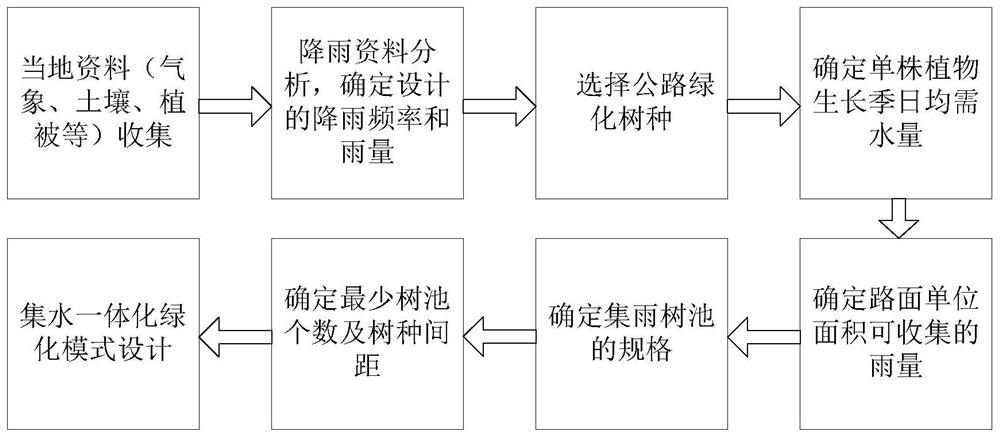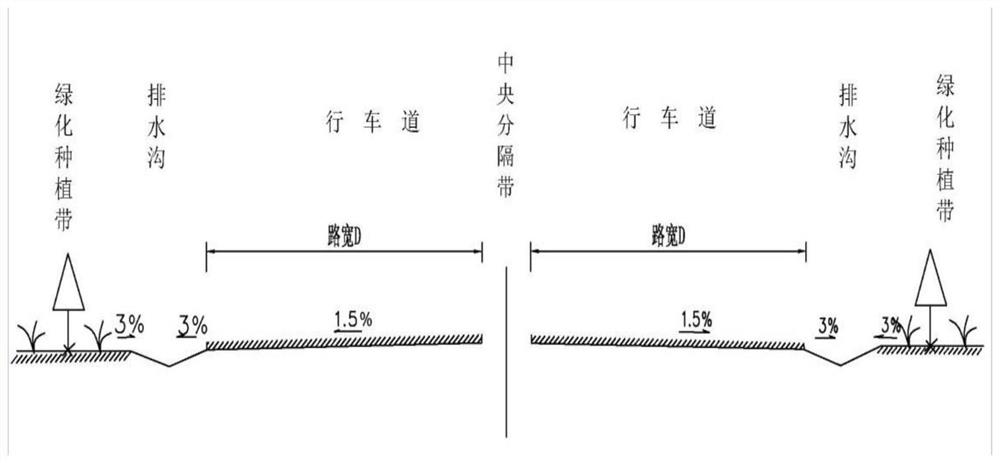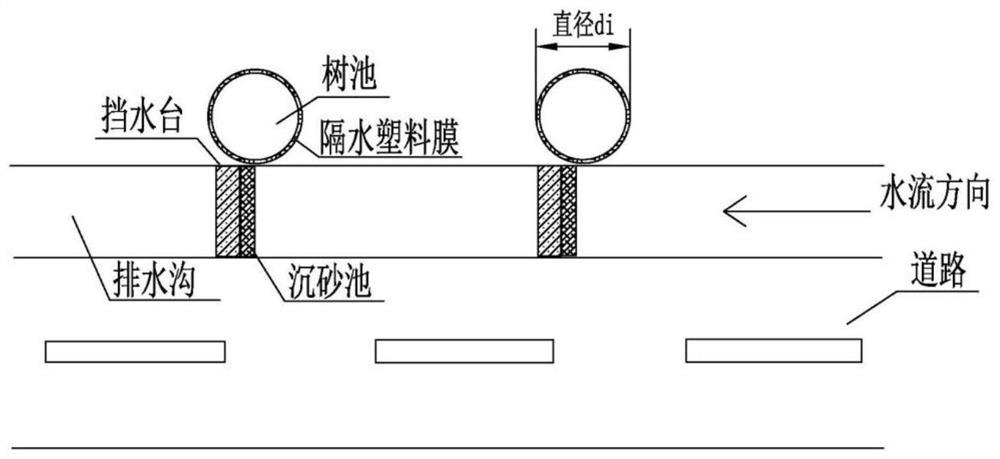A method for road rain harvesting and greening in semi-arid areas
A semi-arid and highway technology, applied in waterway systems, buildings, water supply devices, etc., can solve the problems of high maintenance costs, failure to consider the use of precipitation resources, and failure to consider the use of rainwater, so as to save maintenance costs and save greening maintenance. cost effect
- Summary
- Abstract
- Description
- Claims
- Application Information
AI Technical Summary
Problems solved by technology
Method used
Image
Examples
Embodiment Construction
[0033] The present invention provides following technical scheme: comprise the following steps:
[0034] Step 1. Collect local basic data, including meteorological data, main greening tree species, soil type, soil physical and chemical properties, etc.; rainfall data, mainly based on hydrological manuals of local provinces and cities. The main local greening tree species. The physical properties of the soil, such as porosity, permeability coefficient, etc.
[0035] Step 2. Analyze the basic data and calculate the rainfall at different frequencies respectively. The main design frequency includes the once-in-a-half-year rainfall P 0.5 , once a year rainfall P 1 , rainfall P once every three years 3 and the once-in-five-year rainfall P 5 ;
[0036] According to the hydrological manual, the rainfall with different frequencies and duration were obtained. The design rainfall can be calculated by using the rainfall-period-frequency curves (referred to as frequency curves (refer...
PUM
 Login to View More
Login to View More Abstract
Description
Claims
Application Information
 Login to View More
Login to View More - R&D
- Intellectual Property
- Life Sciences
- Materials
- Tech Scout
- Unparalleled Data Quality
- Higher Quality Content
- 60% Fewer Hallucinations
Browse by: Latest US Patents, China's latest patents, Technical Efficacy Thesaurus, Application Domain, Technology Topic, Popular Technical Reports.
© 2025 PatSnap. All rights reserved.Legal|Privacy policy|Modern Slavery Act Transparency Statement|Sitemap|About US| Contact US: help@patsnap.com



